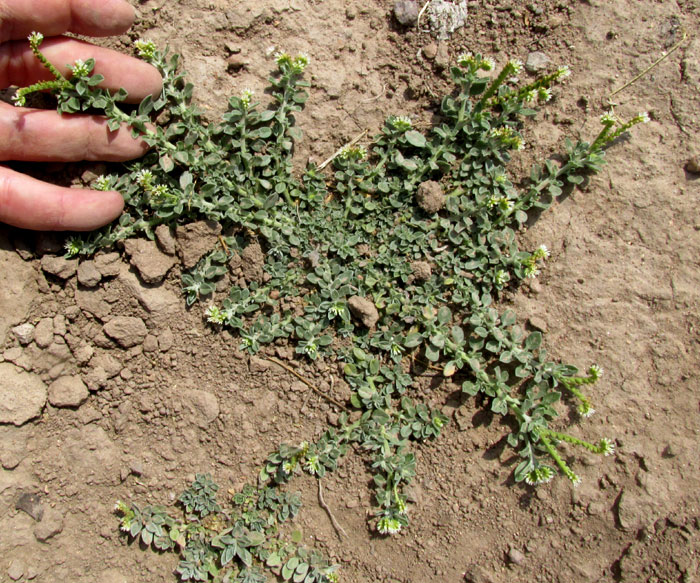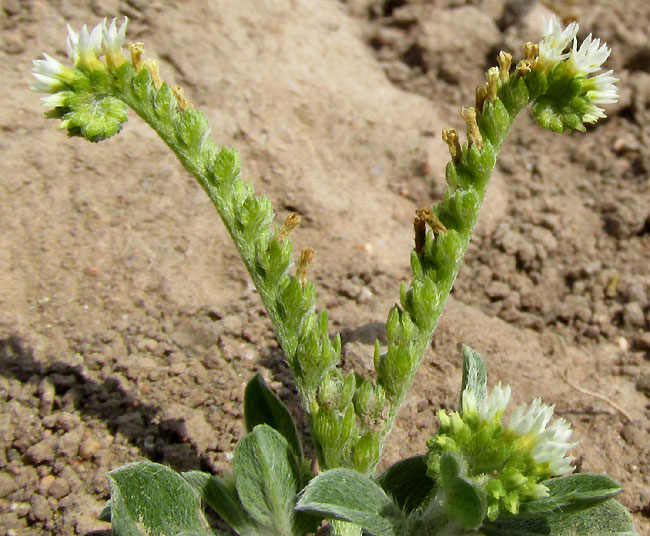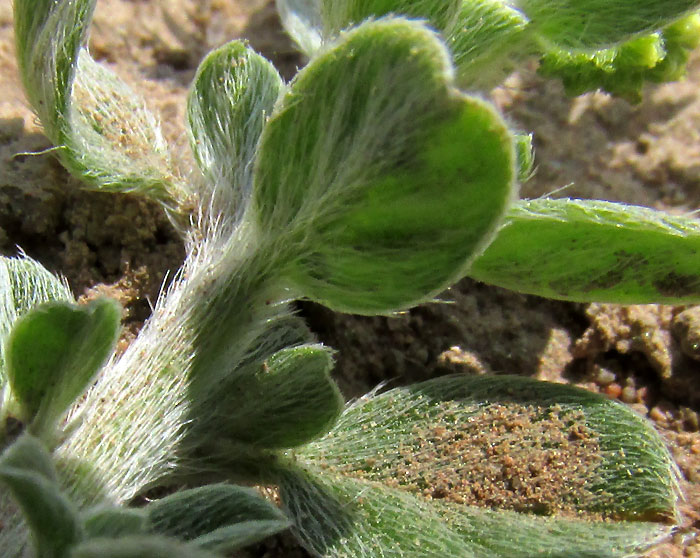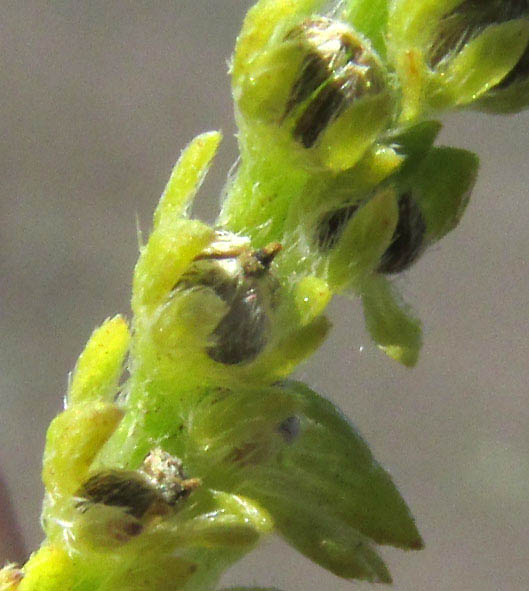Excerpts from Jim Conrad's
Naturalist Newsletter
entry dated May 14, 2022, issued from near Tequisquiapan, elevation about 1,900m (6200 ft), ~N20.57°, ~ W99.89°, Querétaro state, MÉXICO
PROSTRATE HELIOTROPE FLOWERING

Along the sloping margin of the town's completely dried-up and dusty reservoir, where most of the year water stands, the above little herb has been flowering. This is a hard-to-live-in habitat, not only because of the dried-out mud the plant roots in, but also because of the daylong intense sunlight, the heat, and the fact that a plant must complete its life cycle in the few months between when the water recedes, and the rainy season fills up the reservoir again. Now it's the late dry season with the first rains due any time.
Recognizing what kind of herb this is isn't hard for flower gardeners and those who know their wildflowers because of what's shown below:

This is one of about 250 species of heliotrope, genus Heliotropium. This group of plants arranges its flowers in stem-tip, cyme-type clusters, or inflorescences, which at their tips tend to curl into themselves in the manner shown above. The technical name for such inflorescences is "scorpioid," as in "scorpion tail." Since so many species are involved, to identify which species this is, certain important field marks must be noted. One of the most important is that this species is so densely covered with long, stiff hairs hairs that the plant body is silvery colored -- an adaptation which certainly deflects much of the intense sunlight, and cuts down on water loss from leaf vegetation.

You can see that stems and both sides of each leaf is coated with hairs. Also, leaf attachment alternates from one side of the stem to the other, and the leaves taper to both their bases and tips, making them "elliptic" in shape.
A heliotrope's scorpioid inflorescences has it flowers developing, opening, and being pollinated at the inflorescence tips. Once the flowers are pollinated, the corolla dries up and falls off, while the ovary enlarges into a dry drupe-type fruit, which at maturity divides into either four 1-seeded nutlets, or "mericarps," or else two 2-seeded nutlets. Often, as during this plant's identification, it's important to see how many nutlets are developing down toward the inflorescence's base. That's what the next picture shows:

If you look closely you can see that this species produces four nutlets, not two. Further, note that even the nutlets' outer sides are heavily coated with hairs. Also, here we can most clearly see that each flower/fruit does not have rising below it a bract, which is a modified leaf appearing below each flower/fruit in many species.
These features and others lead us to what in English called the Prostrate Heliotrope, HELIOTROPIUM PROCUMBENS. The species lives in tropical deciduous forest, arid scrub, oak forest, disturbed areas and around bodies of water, and is distributed from the US south through nearly all of Mexico, into South America, plus in the Caribbean area.
You might guess that folk medicine in many areas uses this and other heliotrope species to alleviate scorpion stings, in accordance with the Doctrine of Signatures based on the superstition that plants indicate to us humans in various ways what uses we may make of them. Some species, especially Heliotropium indicum, has been used for centuries to cure warts and treat all kinds of inflammations, skin problems and tumors. I can't find mention of any systematic medicinal use of Prostrate Heliotrope, however.
Modern gene sequencing techniques have uncovered an interesting story relating to the heliotropes. The genus Heliotropium as its understood now appears to have arisen in South America. Apparently when the Andes were uplifted, certain populations were cut off from others, and from one of the isolated populations the Old World heliotropes arose. The whole technical story appears in a 2002 work by N. Diane and others entitled "A systematic analysis of Heliotropium, Tournefortia, and allied taxa of the Heliotropiaceae (Boraginales) based on ITS1 sequences and morphological data."